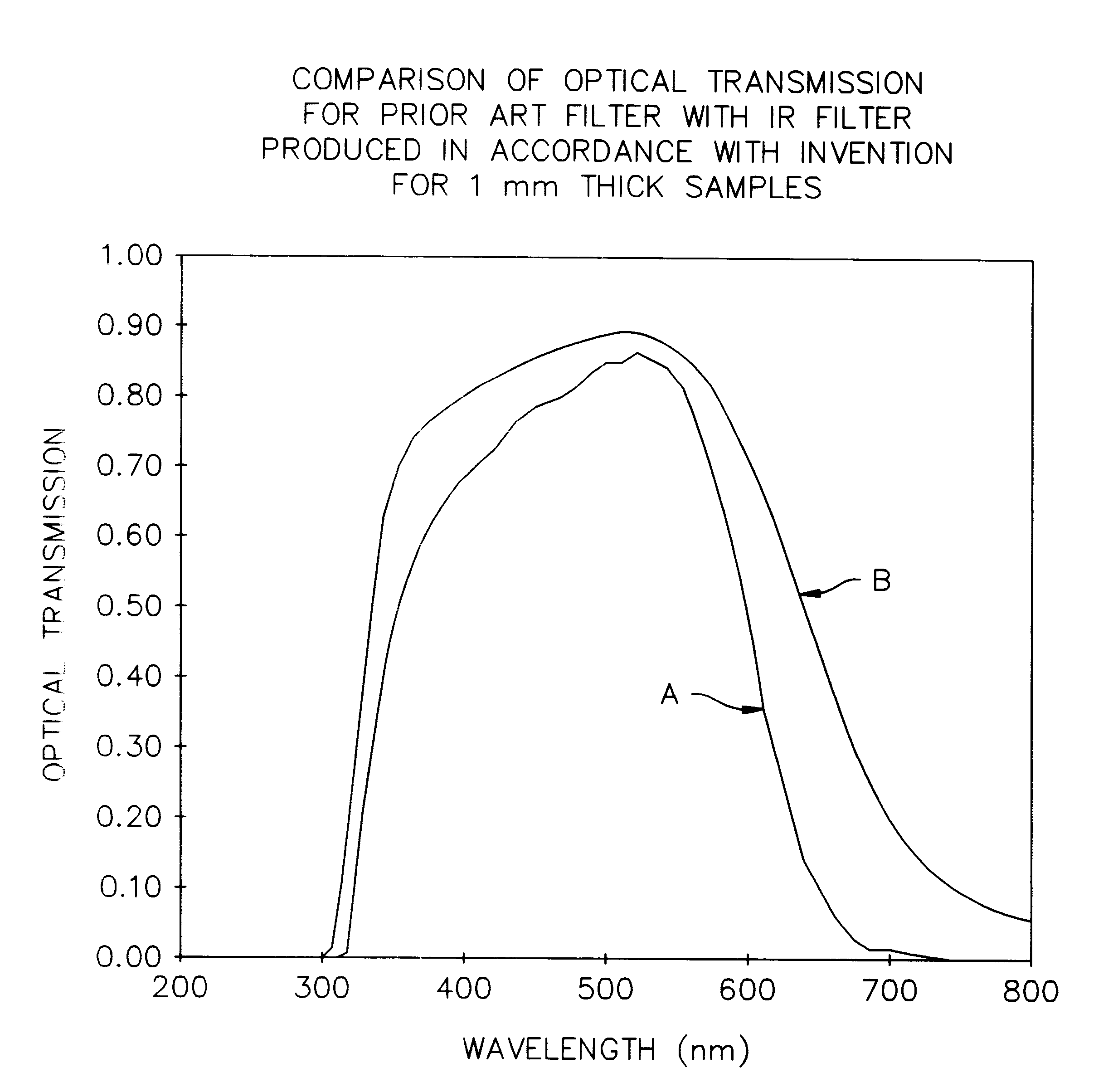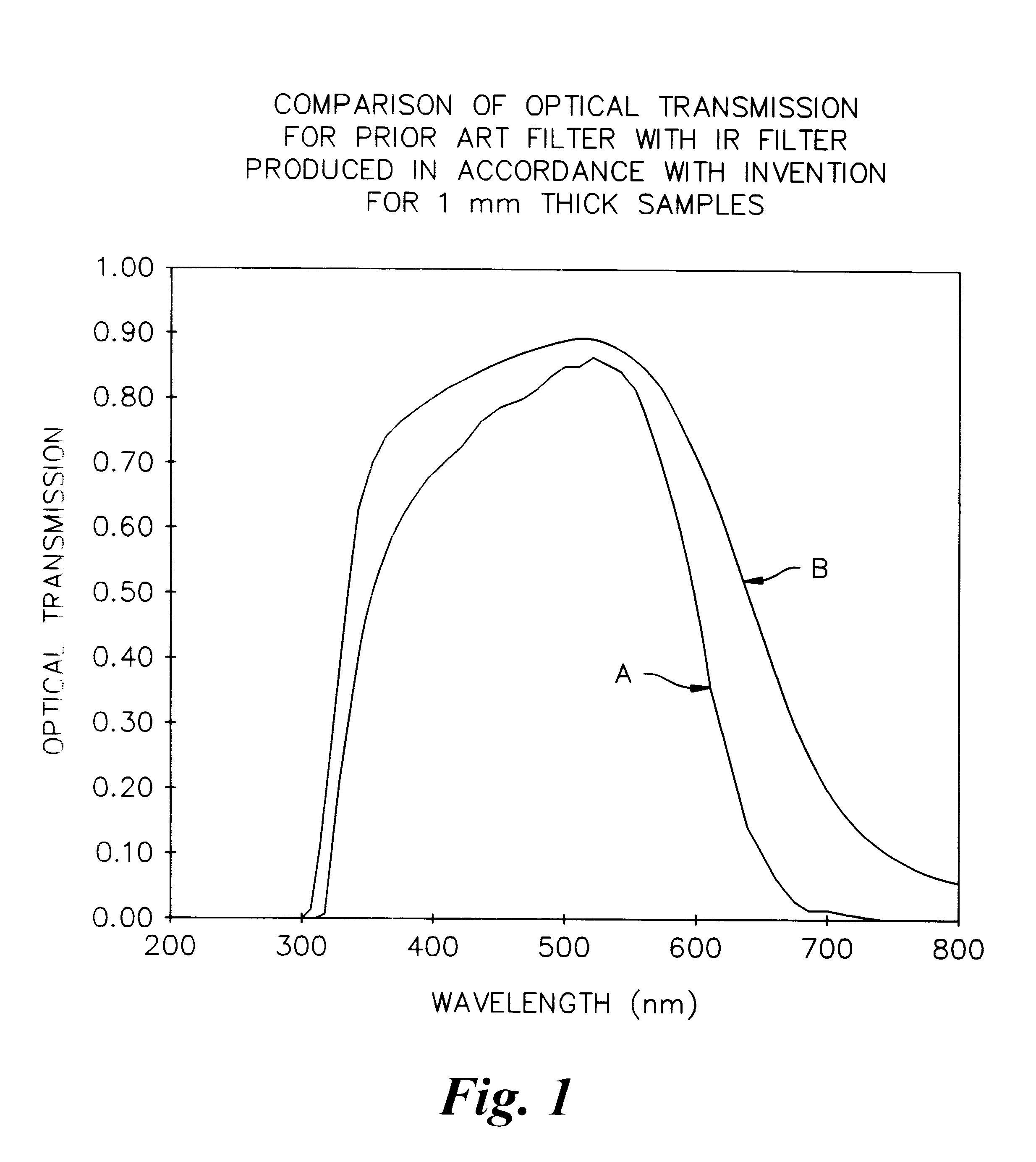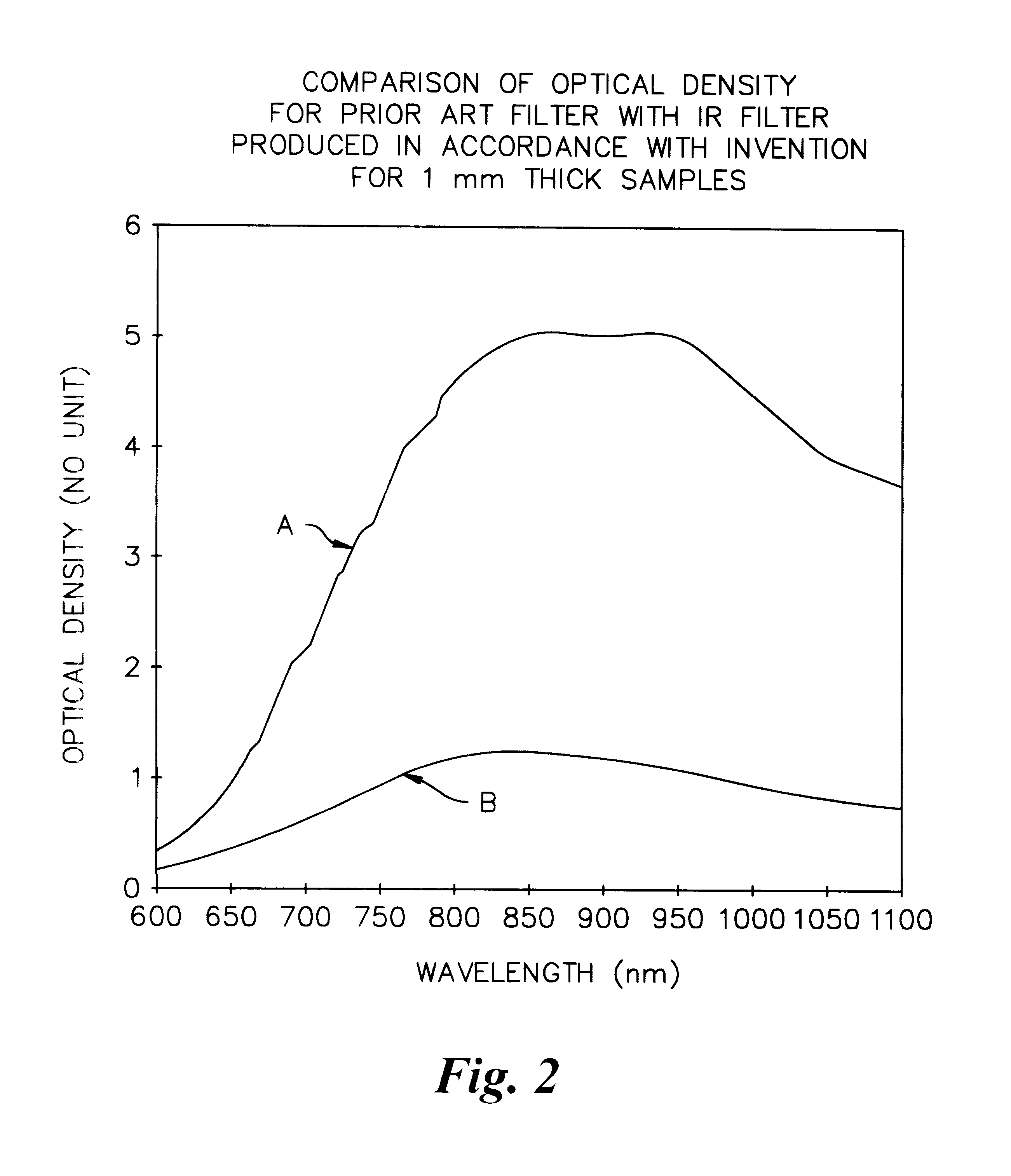Infra red filter
- Summary
- Abstract
- Description
- Claims
- Application Information
AI Technical Summary
Benefits of technology
Problems solved by technology
Method used
Image
Examples
example 4
A piece of copper doped phosphate glass of approximate dimensions 100 mm.times.50 mm.times.4 mm thick was machined from the raw sheet of 10 mm thick by reducing the thickness equally on each face. The piece was then profiled on its edges to the pre-slump shape. The glass was subsequently placed on the ceramic mold in a furnace and the temperature raised from ambient to 550.degree. C. at a rate of 100.degree. C. / hour. This temperature was maintained for 30 minutes by which time the glass had formed itself to the shape of the mold. The temperature was then allowed to fall to 500.degree. C. over a period of 30 minutes and held at this temperature for 2 hours at which stage the glass was then removed from the mold inside the furnace. The furnace temperature was then reduced to 300.degree. C. over a period of 2 hours and then held at 300.degree. C. for 3 hours. After this intermediate stage, the furnace temperature was again reduced to ambient (25.degree. C.) over a period of 8 hours. Th...
PUM
| Property | Measurement | Unit |
|---|---|---|
| Length | aaaaa | aaaaa |
| Length | aaaaa | aaaaa |
| Length | aaaaa | aaaaa |
Abstract
Description
Claims
Application Information
 Login to View More
Login to View More - R&D
- Intellectual Property
- Life Sciences
- Materials
- Tech Scout
- Unparalleled Data Quality
- Higher Quality Content
- 60% Fewer Hallucinations
Browse by: Latest US Patents, China's latest patents, Technical Efficacy Thesaurus, Application Domain, Technology Topic, Popular Technical Reports.
© 2025 PatSnap. All rights reserved.Legal|Privacy policy|Modern Slavery Act Transparency Statement|Sitemap|About US| Contact US: help@patsnap.com



